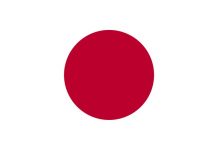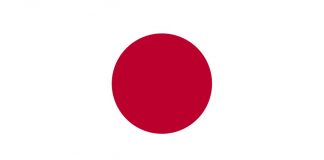| Kabuto: | The helmet worn by the Japanese samurai. It was made of iron or lacquered leather, and was secured to the head by a series of silk cords. | |
| Kachi: | “Win” or “victory.” | |
| Kachinuki shiai: | A type of contest in which a contestant takes on each opponent in succession without rest between matches until he or she is defeated. Each win counts as one, and a draw counts as one-half but eliminates both contestants. | |
| Kagi yari: | “Key spear.” A hooked spear used for parrying and hooking an opponent’s weapon. Like the jutte, it was useful to the police in making arrests. | |
| Kaiken: | “Short knife.” A six-inch knife used by women of the samurai class. | |
| Kajukenbo: | A hybrid method of combat founded in Hawaii in 1947 by five experts: Walter Choo, Joseph Holke, Frank Ordonez, Adriano Emperado, and Clarence Chang. | |
| Kakato: | Heel of the foot. | |
| Kakup: | Rank. | |
| Kalari Payat: | An ancient form of Indian combat embracing hand-to-hand techniques and weapons such as the staff and daggers. | |
| Kakutogi: | Combative art; fighting technique. | |
| Kama: | A farming sickle that farmers in Okinawa converted to a weapon to combat the oppressing Japanese military. | |
| Kamae: | “Attitude” or “posture.” The stances; a general term found in all of the Japanese disciplines. | |
| Kama yari: | A spear to which a single-edged, sickle-shaped blade is attached. | |
| Kamiza: | “Divine seat” or “upper seat.” The area at the front of the dojo where the instructors and honored guests sit. | |
| Kancho: | Head of a style. | |
| Kang fa: | “Hard method.” A ancient art of Chinese boxing that concentrated on kicking and thrusting techniques. | |
| Kansetsu-waza: | Joint techniques. | |
| Kan shu: | “Penetration hand.” A Chinese training method in which a practitioner thrusts his or her hands into powder, then rice, sand, beans, and finally pebbles, to condition the limbs for striking. | |
| Kanzashi: | “Hairpin.” An ornamental hairpin used for self-protection by the women of feudal Japan. | |
| Karate: | (ka rah tay) “Empty hand” or “China hand.” An unarmed method of combat in which all parts of the anatomy are used to punch, strike, kick or block. | |
| Karate-do: | “The way of the empty hand”. Karate designed for fitness and to teach discipline and control and to be used as a competitive sport. It is not meant to teach genuine defense or fighting skills. It is meant to help develop ones character. | |
| Karate-jitsu: | The self-defense art with no game or sporting element. It is the defense and fighting art. | |
| Karateka: | A karate practitioner. | |
| Kashira: | “Pommel cap” or “ferrule.” A metal cap covering the tip of the hilt of Japanese swords, daggers and so forth. | |
| Kara: | “China” | |
| Kata: | “Form or Shape” A series of prearranged maneuvers in many of the Oriental martial arts which can be practiced over a long period of time in order for one to become technically proficient in an art. | |
| Kata-guruma: | shoulder wheel. | |
| Katame-waza: | Grappling-techniques. | |
| Katana: | “Sword.” A Japanese sword, with a curved, single-edged blade twenty-four to thirty-six inches long. | |
| Keibo: | A wooden club used by the Japanese police. | |
| Keikogi: | Karate term sometimes used for a martial arts uniform. | |
| Kempo: | “Fist method” or “Boxing”. The Okinawan pronunciation of Chuan fa. | |
| Kendo: | “The way of the sword.” The modern art and sport of Japanese fencing. The object of a kendo contest is to deliver scoring cuts to an opponent’s predetermined target areas. | |
| Kenjutsu: | “Art of the sword.” An aggressive method of swordsmanship practiced by the Japanese feudal warriors in which the combatants pitted naked blade against naked blade. | |
| Kenkyaku: | “Fencer.” One of many words used to describe those who lived by the sword, especially in literary usage. | |
| Kenpo: | “Fist method.” A modern term describing one of the more innovative martial arts practiced in Hawaii and the Americas, developed by Ed Parker. | |
| Keri: | Kick. | |
| Keri-waza: | Kicking techniques. | |
| Ki: | “Spirit.” Ideally, the mental and spiritual power summoned through concentration and breathing that can be applied to accomplish physical feats. This centralized energy, possessed by every person, can be manifested through the practice of just about any martial discipline. | |
| Kiai: | “Spirit meeting.” A loud shout or yell of self-assertion most common to the Japanese and Okinawan martial disciplines. | |
| Kiba-dachi: | Horse stance. | |
| Kibisu-gaeshi: | Heel counter. | |
| Kihap: | See “ki.” | |
| Kihon: | “Basics” or “basic training.” In karate, the repitition of the fundamental techiques. | |
| Kiritsuki: | “Cut and thrust.” The cutting action of the sword. | |
| Kito ryu: | One of the early jujutsu schools which especially influenced Jigoro Kano’s formulation of Kodokan Judo. | |
| Kobudo: | “Weapons way.” A generic term coined in the 20th century, which can be used to describe collectively all Okinawan combatives. However, it is more accurate to specify “Okinawan kobudo” in order to distinguish them from “Japanese kobudo.” | |
| Kodachi: | “Small sword.” A forerunner of the wakizashi, that boasts a blade between twelve and eighteen inches. | |
| Kodan: | 9th degree black belt in traditional Japanese styles. | |
| Kodankan Katas: | . Nage no Kata (Randori no Kata) . Katame no Kata (Randori no Kata) . Kime no Kata . Kodokan Goshin Jutsu . Ju no Kata . Itsutsu no Kata . Koshiki no Kata . Seiryoko Zen’yo Kokumin Taiiku no Kata |
|
| Kodansha: | A high-ranking black belt of fifth degree and above. | |
| Kogusoku: | An ancient method of unarmed combat mentioned in connection with kumiuchi and sumo in the oldest records of the Japanese martial arts. | |
| Kohai: | A junior in a school or organization. | |
| Kojiri: | The chape or end cap of the scabbard of a samurai sword. | |
| Kokyu: | “Breathing” or “ki.” | |
| Koshi: | Ball of the foot, or the hip(s). | |
| Koshi-guruma: | Hip wheel, hip techniques | |
| Koshi Waza: | Hip techniques. | |
| Ko-soto-gari: | Minor outer reap. Judo foot technique. | |
| Kote: | Wrist. | |
| Ko-soto-gake: | Minor outer hook. Judo foot technique. | |
| Ko-uchi-gaeshi | minor inner counter hand technique. | |
| Kuen: | See “kata.” | |
| Kuan tao: | A method of Chinese boxing practiced in Indonesia, Malaysia and the Philippines. | |
| Ko-uchi-gari: | Minor inner sweep. Judo foot technique. | |
| Kappo or Kuatsu: | A special system of acupressure used for resuscitation. | |
| Ku-chiki-taoshi: | Pushing over rotten tree. Hand technique | |
| Kuji kiri: | “Energy channeling.” A hypnotic movement of the fingers used by the ninja to confuse their opponents. Known as mudras in Sanskrit. | |
| Kumite: | (koo-me-tay) “to cross hands or engage hands, grapple”. kumi (grapple) and te (hand) The point when the fight actually begins.The application of fighting skills with an opponent. Kumite is used as a term refering to martial arts competitions where sparring takes palce and is normally performed with referees, using a point system to recognize proper karate techniques. Kumite allows karate-ka to practice the techniques learned through kata against an actual opponent, but under controlled conditions using a set of rules. | |
| Kumiuchi: | “Grappling.” Wrestling techniques originally used by the samurai on the battlefield and which gave birth to jujutsu. | |
| Kuneh: | Bowing. | |
| Kungchido: | Kungchido is the combination of Kung fu, Tai Chi and Karate with unique style, which has been developed by analyzing, synthesizing and marrying all the “above” mentioned schools by Grandmaster Saroj Joshi of Nepal. see Saroj Joshi on Linkedin | |
| Kung fu: | A generic term for a majority of the Chinese martial arts. Kung fu has two major divisions. The southern styles display a clear preference for techniques of strength and power, whereas the northern styles employ soft, open movement. | |
| Kup: | The grade levels below black belt in the Korean martial arts. | |
| Kupso: | The vital points of the body. | |
| Kurai | A yielding, passive state of mind where one bends with the attacker’s force and uses it against him. | |
| Kurtka: | The tight fitting jacket worn by Sambo practitioners. It is short and has epaulets for grabbing. | |
| Kusari fundo: | A small chain with weighted ends. | |
| Kusarigama: | A chain-sickle weapon, noted for its efficiency in neutralizing the sword at long range. | |
| Kwonbop: | A Chinese method of unarmed combat that spread to and was popularized in Korea between A.D. 1147 – 1170. | |
| Kwoon: | A facility in which the Chinese martial arts are practiced. | |
| Kyubo: | Chest area. | |
| Kyusho-jitsu: | (cue-show-jitsu) Pressure point fighting. | |
| Kyokpa: | Breaking. | |
| Kyoshi: | A Japanese martial arts teacher who is sixth- or seventh-degree black belt rank. | |
| Kyu: | A rank designation signifying a level of achievement below black belt or dan rank in the Japanese martial arts. | |
| Kyudo: | “Way of the bow.” The modern Japanese practice of archery as a discipline of coordinated integration. Kyudo’s basis is the clarity of execution, the poise, and the control over the bow. | |
| Kyusho: | (cue-show) Pressure points. |







